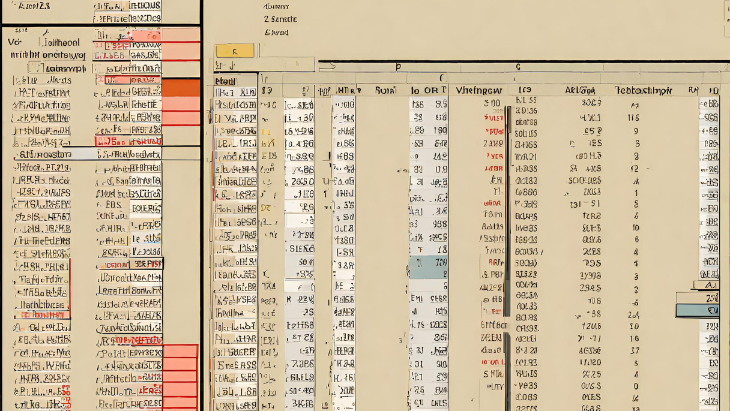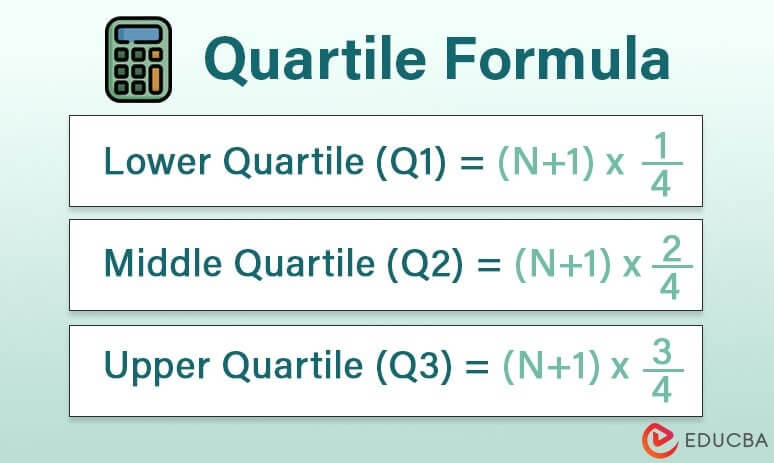Uncertainty is a fact of life. It can be found in all aspects of our lives, from our personal relationships to our professional careers. In this article, we will discuss how to find uncertainty. We will explore the different sources of uncertainty and the techniques that can be used to identify it.
How To Find Uncertainty
Uncertainty is a fact of life. It can be found in all aspects of our lives, from our personal relationships to our professional careers. In a world that is constantly changing, uncertainty is becoming an increasingly important factor to consider.
There are many different sources of uncertainty. Some of the most common include:
- Incomplete or inaccurate information: When we don’t have all the information we need to make a decision, we are faced with uncertainty.
- Complexity: The more complex a situation is, the more difficult it is to predict the outcome.
- Change: Things are constantly changing, which can make it difficult to know what to expect.
There are a number of techniques that can be used to find uncertainty. Some of the most common include:
- Identifying the sources of uncertainty: The first step is to identify the sources of uncertainty in a given situation. Once you know what factors are contributing to uncertainty, you can start to develop strategies for dealing with it.
- Quantifying uncertainty: Once you have identified the sources of uncertainty, you can start to quantify it. This involves assigning a level of uncertainty to each factor.
- Modeling uncertainty: Uncertainty can be modeled using a variety of techniques. This can help you to understand how uncertainty can impact the outcome of a situation.
By understanding the sources of uncertainty and how to quantify it, you can make more informed decisions and reduce the risk of negative consequences.
Here are some specific tips for finding uncertainty:
- Ask yourself “what if?” This simple question can help you to identify potential sources of uncertainty.
- Consider the different ways that things could go wrong. Don’t just focus on the best-case scenario.
- Talk to experts. They can often provide insights into potential sources of uncertainty.
- Use tools and techniques to help you identify uncertainty. There are a number of software and online resources that can help you to quantify uncertainty.
Uncertainty Finding
Uncertainty Finding: A Brief Overview
Uncertainty is a fact of life. It can be found in all aspects of our lives, from our personal relationships to our professional careers. In a world that is constantly changing, uncertainty is becoming an increasingly important factor to consider.
What is uncertainty?
Uncertainty is the state of not knowing or being able to predict the outcome of an event. It can be caused by a number of factors, including:
- Incomplete or inaccurate information: When we don’t have all the information we need to make a decision, we are faced with uncertainty.
- Complexity: The more complex a situation is, the more difficult it is to predict the outcome.
- Change: Things are constantly changing, which can make it difficult to know what to expect.
How to find uncertainty?
There are a number of techniques that can be used to find uncertainty. Some of the most common include:
- Identifying the sources of uncertainty: The first step is to identify the sources of uncertainty in a given situation. Once you know what factors are contributing to uncertainty, you can start to develop strategies for dealing with it.
- Quantifying uncertainty: Once you have identified the sources of uncertainty, you can start to quantify it. This involves assigning a level of uncertainty to each factor.
- Modeling uncertainty: Uncertainty can be modeled using a variety of techniques. This can help you to understand how uncertainty can impact the outcome of a situation.
Tips for finding uncertainty
Here are some specific tips for finding uncertainty:
- Ask yourself “what if?” This simple question can help you to identify potential sources of uncertainty.
- Consider the different ways that things could go wrong. Don’t just focus on the best-case scenario.
- Talk to experts. They can often provide insights into potential sources of uncertainty.
- Use tools and techniques to help you identify uncertainty. There are a number of software and online resources that can help you to quantify uncertainty.
Conclusion
By understanding the sources of uncertainty and how to quantify it, you can make more informed decisions and reduce the risk of negative consequences.
Additional information
In addition to the techniques and tips mentioned above, there are a number of other resources available to help you find uncertainty. These include:
- Books and articles on uncertainty: There are a number of books and articles available that provide in-depth information on uncertainty.
- Online courses and tutorials: There are a number of online courses and tutorials that can teach you how to find and quantify uncertainty.
- Software and online resources: There are a number of software and online resources that can help you to identify and quantify uncertainty.
Sources of Uncertainty
Uncertainty is a fact of life. It can be found in all aspects of our lives, from our personal relationships to our professional careers. In a world that is constantly changing, uncertainty is becoming an increasingly important factor to consider.
There are many different sources of uncertainty. Some of the most common include:
-
**Incomplete or inaccurate information: When we don’t have all the information we need to make a decision, we are faced with uncertainty. This can be due to a number of factors, such as:
- Lack of data: We may not have access to all the data we need to make a decision.
- Data quality: The data we do have may be incomplete or inaccurate.
- Data interpretation: We may not be able to interpret the data correctly.
-
**Complexity: The more complex a situation is, the more difficult it is to predict the outcome. This can be due to a number of factors, such as:
- The number of variables involved: The more variables involved in a situation, the more difficult it is to predict how they will interact.
- The non-linear relationships between variables: The relationships between variables may not be linear, which makes it difficult to predict how they will change over time.
- The presence of feedback loops: Feedback loops can make it difficult to predict the outcome of a situation, as they can lead to unexpected and unpredictable outcomes.
-
**Change: Things are constantly changing, which can make it difficult to know what to expect. This can be due to a number of factors, such as:
- Technological change: New technologies can change the way we live and work, which can make it difficult to predict the future.
- Social change: Social values and norms can change over time, which can also make it difficult to predict the future.
- Environmental change: The environment is constantly changing, which can also have a significant impact on our lives.
Conclusion
By understanding the sources of uncertainty, we can better prepare for and manage it. This can help us to make more informed decisions and reduce the risk of negative consequences.
Additional information
In addition to the sources of uncertainty mentioned above, there are a number of other factors that can contribute to uncertainty. These include:
- Human error: Human error can lead to uncertainty, such as when someone makes a mistake in calculating a risk or predicting an outcome.
- Natural disasters: Natural disasters can cause uncertainty, such as when a hurricane or earthquake damages property or infrastructure.
- Political instability: Political instability can cause uncertainty, such as when a government changes or a war breaks out.
How to Measure Uncertainty
Uncertainty is a fact of life. It can be found in all aspects of our lives, from our personal relationships to our professional careers. In a world that is constantly changing, uncertainty is becoming an increasingly important factor to consider.
What is uncertainty?
Uncertainty is the state of not knowing or being able to predict the outcome of an event. It can be caused by a number of factors, including:
- Incomplete or inaccurate information: When we don’t have all the information we need to make a decision, we are faced with uncertainty.
- Complexity: The more complex a situation is, the more difficult it is to predict the outcome.
- Change: Things are constantly changing, which can make it difficult to know what to expect.
How to measure uncertainty?
There are a number of techniques that can be used to measure uncertainty. Some of the most common include:
-
**Quantitative methods: These methods use mathematical or statistical techniques to assign a numerical value to uncertainty. Some common quantitative methods include:
- Probability: Probability is a measure of the likelihood of an event occurring.
- Interval estimation: Interval estimation is a method of estimating the range of possible values for a variable.
- Monte Carlo simulation: Monte Carlo simulation is a technique that uses random numbers to generate a distribution of possible outcomes.
-
**Qualitative methods: These methods use subjective judgment to assess uncertainty. Some common qualitative methods include:
- Expert opinion: Expert opinion is the judgment of an individual or group of experts.
- Delphi technique: The Delphi technique is a method of gathering expert opinion anonymously.
- Scenario analysis: Scenario analysis is a method of considering a range of possible outcomes.
Tips for measuring uncertainty
Here are some specific tips for measuring uncertainty:
- Consider the sources of uncertainty: The first step is to identify the sources of uncertainty in a given situation. Once you know what factors are contributing to uncertainty, you can start to develop strategies for measuring it.
- Use the right method: The best method for measuring uncertainty will vary depending on the situation. Consider the factors that contribute to uncertainty and the level of accuracy you need.
- Be transparent: When reporting uncertainty, be clear about the methods you used and the assumptions you made.
Conclusion
By understanding how to measure uncertainty, you can make more informed decisions and reduce the risk of negative consequences.
Additional information
In addition to the techniques and tips mentioned above, there are a number of other resources available to help you measure uncertainty. These include:
- Books and articles on uncertainty: There are a number of books and articles available that provide in-depth information on uncertainty.
- Online courses and tutorials: There are a number of online courses and tutorials that can teach you how to measure uncertainty.
- Software and online resources: There are a number of software and online resources that can help you to measure uncertainty.
By taking advantage of these resources, you can develop the skills you need to measure uncertainty and make informed decisions in the face of it.
How to Manage Uncertainty
Uncertainty is a fact of life. It can be found in all aspects of our lives, from our personal relationships to our professional careers. In a world that is constantly changing, uncertainty is becoming an increasingly important factor to consider.
What is uncertainty management?
Uncertainty management is the process of identifying, assessing, and responding to uncertainty. It is a critical skill for anyone who wants to make informed decisions and reduce the risk of negative consequences.
How to manage uncertainty?
There are a number of techniques that can be used to manage uncertainty. Some of the most common include:
- **Identifying the sources of uncertainty: The first step is to identify the sources of uncertainty in a given situation. Once you know what factors are contributing to uncertainty, you can start to develop strategies for managing it.
- **Assessing the level of uncertainty: Once you have identified the sources of uncertainty, you need to assess the level of uncertainty. This will help you to determine the appropriate level of response.
- **Developing a response plan: Once you have assessed the level of uncertainty, you need to develop a response plan. This plan should outline how you will deal with uncertainty if it occurs.
- **Monitoring the situation: Once you have implemented your response plan, you need to monitor the situation to ensure that it is effective.
Tips for managing uncertainty
Here are some specific tips for managing uncertainty:
- **Be prepared: The best way to manage uncertainty is to be prepared for it. This means having a plan in place and being willing to adapt as needed.
- **Be flexible: Uncertainty can change quickly, so it is important to be flexible and adaptable.
- **Be proactive: Don’t wait for uncertainty to happen before you take action. Take steps to mitigate the risk of uncertainty.
Conclusion
By understanding how to manage uncertainty, you can make more informed decisions and reduce the risk of negative consequences.
Additional information
In addition to the techniques and tips mentioned above, there are a number of other resources available to help you manage uncertainty. These include:
- Books and articles on uncertainty: There are a number of books and articles available that provide in-depth information on uncertainty.
- Online courses and tutorials: There are a number of online courses and tutorials that can teach you how to manage uncertainty.
- Software and online resources: There are a number of software and online resources that can help you to manage uncertainty.











